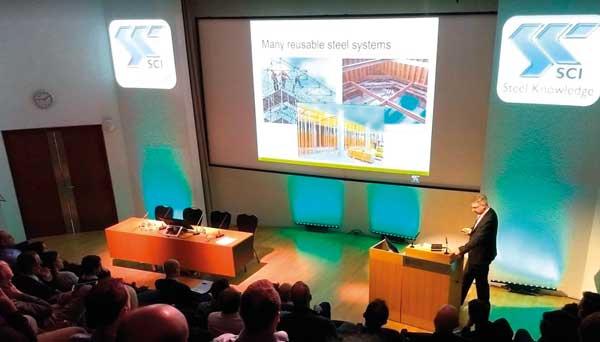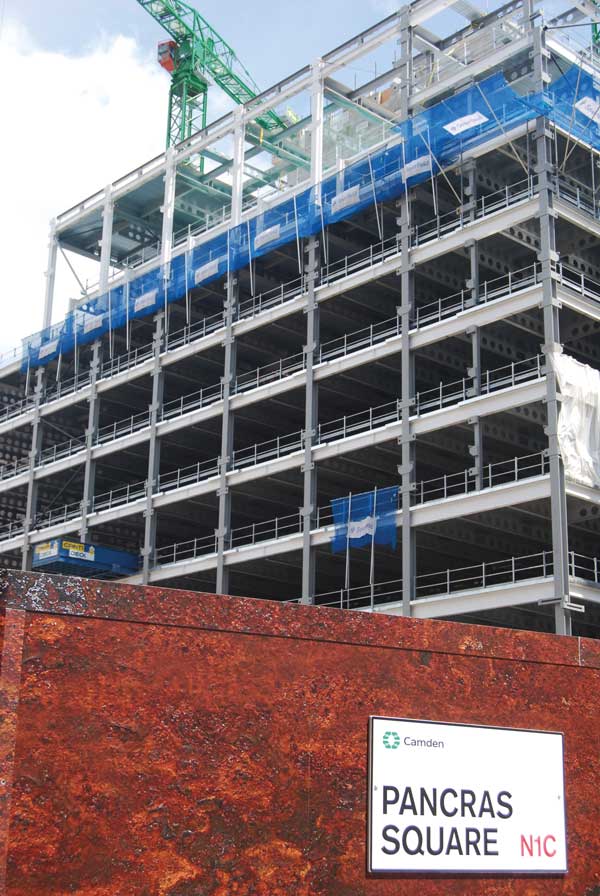News
Letters: July/August 2005
NSC welcomes letters from readers on steel construction related issues. Please keep your letters brief — the Editor reserves the right to condense.
Edge protection system
I would like to congratulate the Editor and staff on the revitalised New Steel Construction, which is an entertaining and informative read and achieves an overall balance between news, project studies and technical reports.
Over the last two months the thing which particularly caught my eye has been the on site photographs of both the Bauhaus project and Sunderland Royal Hospital. In both cases (and bearing in mind the ever increasing attention being paid to Health and Safety issues on site) I thought the pictures really captured the order and safety achievable with steel framed building construction.
Also could you please provide details of the edge protection system so clearly visible around the perimeter of the floors.
Gerry Gray
Associate
White Young Green
The Editor replies: Thanks for the positive feedback on the magazine. The two examples of the edge protection systems that you noticed are manufactured by easi-edge (01777 870 901). The steel construction sector has taken a lead in developing protection against falls from height and there is a new European edge protection standard that quietly came into force in December 2004 called EN 13374. easi-edge has been in use for two years and complies with the new standard’s Class B specification. The system uses specially designed steel posts that lock into fittings pre drilled by a steelwork contractor. Lightweight steel meshed panels are attached to the posts before the structural element is lifted, or is fixed from a cherry picker.
Steel frames for hospitals
Last month’s NSC carried a number of news items and features on hospital construction and vibration. While reading these I noticed that in all cases meeting the vibration requirements of HTM 2045, (the National Health Service document which defines the performance standard) was achieved very simply without major modifications to a standard “office type” structural design. This seems to be in marked contrast to the situation suggested by the Concrete Centre’s recent publicity
Mike Hawes
Technical Director
Westok Ltd
The editor replies: The two features on hospitals and the article on vibrations in the last (June) issue of NSC showed conclusively that steel-framed hospitals built using typical office construction can easily meet the vibration response performance required by HTM2045. Although this observation would appear to differ diametrically compared to that suggested by the recent publicity issued by the Concrete Centre, their conclusions are based on a study using predictive techniques on a hypothetical building as opposed to measured performance on real floors.
Eurocodes clarity
The appearance of your piece on Patrick Dowling in the last issue and its reminder of his involvement in the production of EC3 over many years, including being Chairman of the Committee responsible for the great majority of that time, prompted me to write and comment on the current situation. Many Structural Engineers are, I am sure, somewhat tired of hearing “The Structural Eurocodes are coming, you had better start adapting your working processes.” After many false dawns and much misleading and unhelpful advice, we are now in the period where preparations for their adoption must be made. Not today but over the next couple of years, since the actual documents are now starting to be issued by BSI. Even so, clarity is missing as it has not been made clear that no Eurocode can be used in the UK without its National Annex; the great majority of these have yet to be written. So for most Eurocodes the present position is that interested parties may purchase the text of the technical provisions from BSI, but without the appropriate NA they do not constitute the full package of design provisions for use as an alternative to British Standards in the UK.
Those readers unaware of the existence of the Institution of Structural Engineers Committee, founded as a direct result of that Institution’s Report to the ODPM in April of last year, might like to know that a group is in place to assist with the transfer from a design climate based on British Standards to one based on the Eurocodes. The many tasks needed to effect this smoothly e.g. reliable information on publication dates, the availability of supporting material, development of computer software etc have all been identified and work is in hand by the SCI and others to ensure that the Structural Steelwork community is provided with the wherewithal to respond positively to the new opportunities.
Professor David A Nethercot
Department of Civil and Environmental Engineering, Imperial College London












